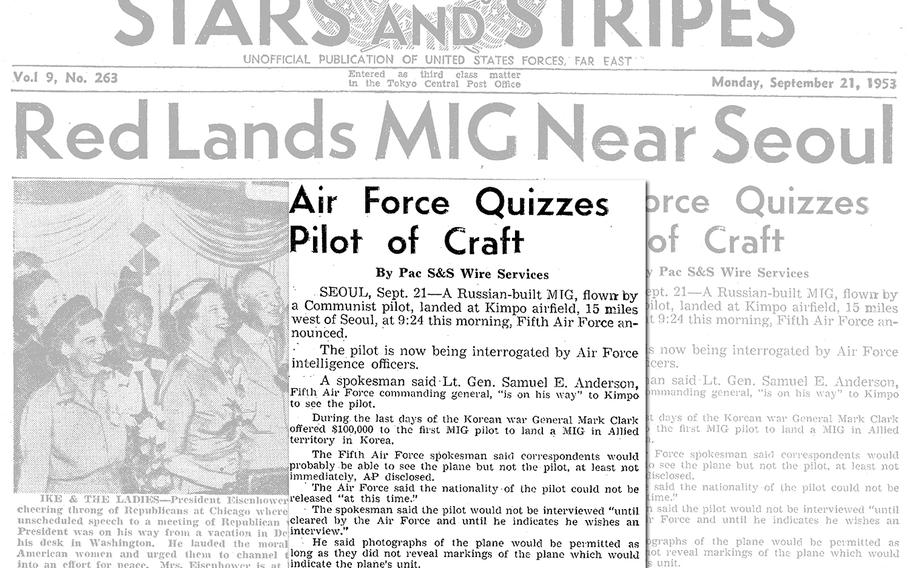
In the morning of September 21, 1953, North Korean Sr. Air Force Lt. No Kum-Sok took off from his South Korean station at Sunan Air Base for a training mission in one of the 16 new Soviet-built MiG-15s, just recently acquired by the North Korean military. As luck would have it, the U.S. air defense radar was shut down for temporary maintenance, allowing No’s MiG to go undetected. (Stars and Stripes)
The Cold War saw its fair share of military defectors, fleeing their communist homelands. Several of them took a gamble crossing the ‘DMZ in the sky’.
In the morning of September 21, 1953, North Korean Sr. Air Force Lt. No Kum-Sok took off from his South Korean station at Sunan Air Base for a training mission in one of the 16 new Soviet-built MiG-15s, just recently acquired by the North Korean military.
As luck would have it, the U.S. air defense radar was shut down for temporary maintenance, allowing No’s MiG to go undetected.
A little while later he touched down on U.S. Airbase Kimpo, much to the consternation of the U.S. airmen on the ground. No’s plane was the first MiG-15 to arrive intact and claimed by the United States.
Unbeknown to No, United Nation Command Commanding General Mark W. Clark had offered $100,000 reward and political asylum to the first pilot who would deliver a MiG to the U.N. The U.S. Air Force made good on the promise.
The plane is now on display at the National Museum of the U.S. Air Force at Wright-Patterson AFB in Ohio. You can find more about No’s MiG on the museum’s website.
Although two Polish MiG-15 pilots had defected earlier that year by flying their planes out of their USSR controlled homeland and into Denmark, it was the first intact MiG-15 the U.S. got to keep. The first MiG-15, flown by Lt. Franciszek Jarecki was returned to the Polish air force, while the second one was damaged as Lt. Zdizislaw Jazwinski was forced to crash-land his.
Want to know what happened to the two Polish pilots? Or read about No’s $100,000 reward? Search Stars and Stripes’ digital archive.